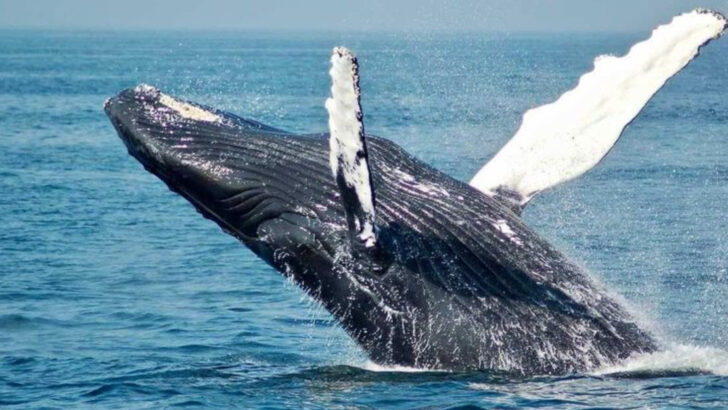Get ready to be awestruck by some of the most massive creatures to ever walk the Earth. From the colossal elephants roaming the savannas to the enormous whales cruising the ocean depths, these giants rule their worlds with sheer power and presence.
Their size alone commands attention, but it’s their unique behaviors, habitats, and roles in the ecosystem that truly make them stand out. Each of these magnificent mammals plays an essential part in maintaining the balance of their environments.
In this post, we dive into the mighty world of the 16 largest mammals on Earth, unveiling their fascinating characteristics and incredible adaptations. Whether on land or sea, these giants are a testament to nature’s raw strength and beauty.
African Elephant
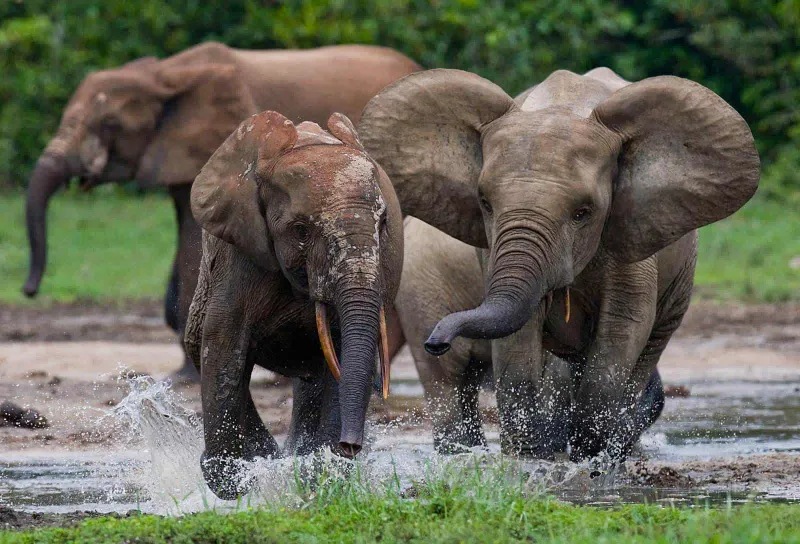
The African Elephant is the largest land mammal on Earth, capable of reaching heights of up to 13 feet and weighing around 14,000 pounds. They roam the African savannahs and forests with their large ears, which help in thermoregulation.
Elephants are known for their strong social bonds and intelligence. They live in matriarchal family groups led by the oldest female. With their trunks, they perform complex tasks such as picking up small objects and communicating.
Their presence is vital for the ecosystem as they help in seed dispersal and modifying their habitat by uprooting trees.
Blue Whale
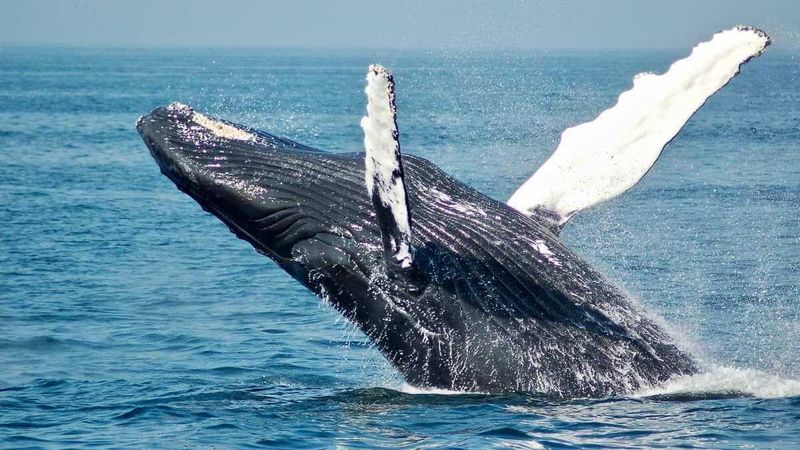
The Blue Whale holds the title of the largest mammal on Earth, reaching lengths over 100 feet and weighing as much as 200 tons. These ocean giants feed primarily on krill, consuming up to four tons a day.
Despite their size, Blue Whales are gentle creatures and are often seen alone or in small groups. Their songs are complex and can be heard over great distances in the ocean.
Blue Whales are found in all major oceans, traveling long distances in search of food. Their sheer size makes them a spectacular sight in the marine world.
Hippopotamus

Hippopotamuses are one of the largest land mammals, weighing up to 3,500 pounds. They are primarily found in sub-Saharan Africa, inhabiting rivers and lakes.
Despite their bulky appearance, hippos are excellent swimmers and can hold their breath underwater for several minutes. They spend most of their day in water to stay cool, emerging at night to graze on grasses.
Hippos are social animals, often found in groups of up to 30 individuals. With their powerful jaws and large teeth, they are formidable creatures, playing a crucial role in their aquatic ecosystems.
Giraffe
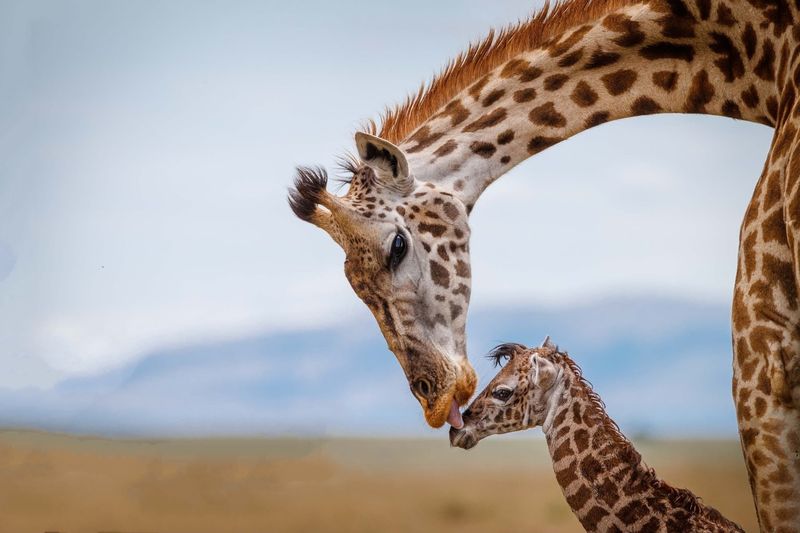
Giraffes are the tallest mammals, known for their long necks and distinct spotted patterns. They can grow up to 18 feet tall, allowing them to reach leaves high in trees.
Found in diverse habitats across Africa, giraffes are primarily browsers, feeding on leaves, flowers, and fruits of woody plants. Their long necks also aid in vigilance against predators.
Giraffes live in loose herds, exhibiting social behaviors like necking, where males use their necks in combat. Despite their size, they are agile and can run at speeds up to 37 miles per hour when threatened by predators.
Walrus
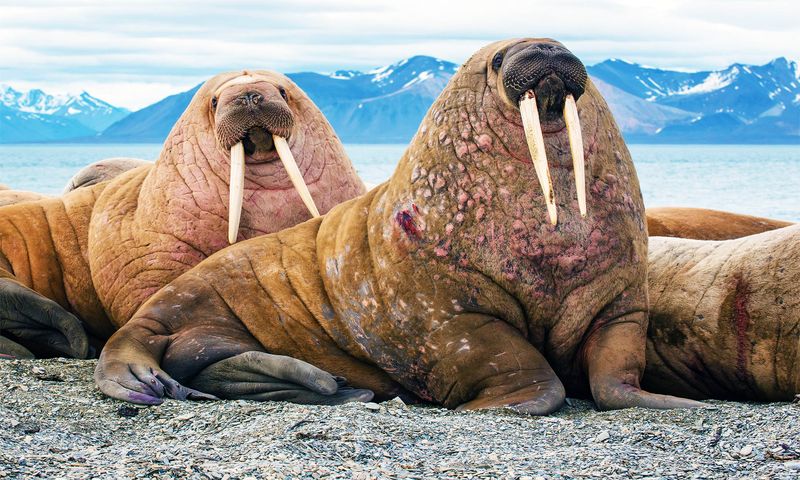
Walruses are large marine mammals, distinguished by their long tusks and whiskered faces. They inhabit the Arctic regions and are adapted to cold environments with their thick blubber.
Weighing up to 3,500 pounds, walruses are social animals, often seen basking in large groups on ice floes. They use their tusks for hauling out on ice and in social interactions.
Feeding primarily on benthic invertebrates, they play a vital role in the Arctic marine ecosystem. Their vocalizations are unique, and they are known for their iconic ‘roars’ that can be heard over long distances.
White Rhinoceros
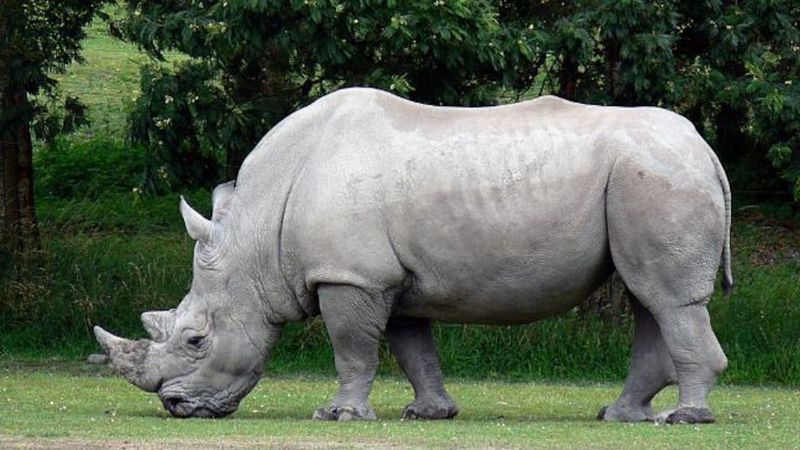
The White Rhinoceros is one of the largest land mammals, weighing up to 5,000 pounds and characterized by its square lips adapted for grazing. Found primarily in southern Africa, these majestic creatures inhabit grasslands and savannas.
White Rhinos are social animals, often found in groups led by a dominant female, and can be distinguished by their large size and two prominent horns.
Unfortunately, they are under threat from poaching due to the high value of their horns. Conservation efforts are critical in protecting this species from extinction.
Gaur

The Gaur, also known as the Indian Bison, is the largest bovine species, found in South and Southeast Asia. Weighing up to 3,300 pounds, they have a muscular build and distinctive horns.
Gaurs inhabit dense forests and grasslands, forming small herds led by a dominant male. They are primarily grazers, feeding on grass and leaves.
Despite their size, gaurs are agile and can run quickly to evade predators. These majestic creatures play a crucial role in their ecosystem, aiding in habitat maintenance. Their presence is significant in the cultural heritage of the regions they inhabit.
Polar Bear

Polar Bears are the largest land carnivores, with males weighing up to 1,500 pounds. They inhabit the Arctic regions, relying on sea ice for hunting seals, their primary food source.
Their thick white fur and a layer of blubber provide insulation against the cold. Polar Bears are excellent swimmers, capable of covering vast distances in search of food.
Solitary by nature, except during mating and cub-rearing seasons, they are iconic symbols of the Arctic wilderness. As a top predator, they play a crucial role in maintaining the balance of their ecosystem.
Kodiak Bear

Kodiak Bears are one of the largest bear species, with males weighing up to 1,500 pounds. Found exclusively in the Kodiak Archipelago of Alaska, these bears have adapted to a diet rich in fish, particularly salmon.
Their thick fur and powerful build make them formidable predators. Kodiak Bears are solitary, except during mating or when a mother is raising her cubs.
They hibernate during the winter months, emerging in spring to replenish their energy reserves. As apex predators, they play a vital role in their ecosystem, influencing prey populations and maintaining balance.
American Bison
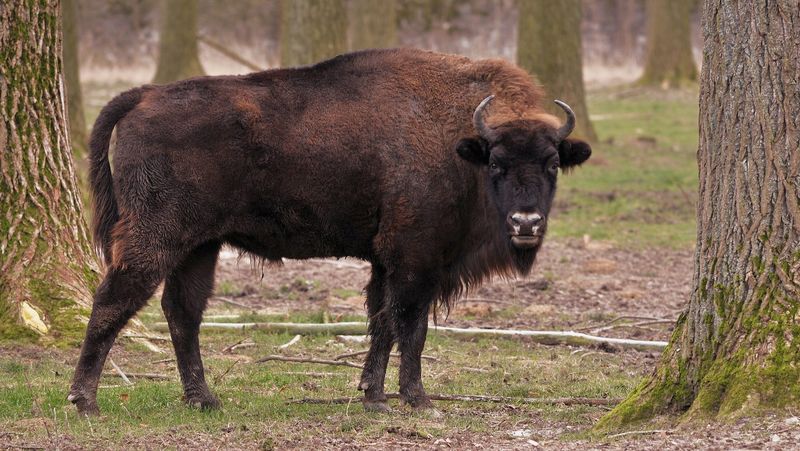
The American Bison is the largest land animal in North America, known for its massive head and shaggy coat. Weighing up to 2,000 pounds, they once roamed the continent in vast herds.
Today, they are primarily found in protected areas and reserves. Bison are grazers, feeding on grasses and herbs, and their grazing habits shape the landscape, promoting biodiversity.
Despite their size, bison are agile and can run at speeds up to 35 miles per hour. Conservation efforts have been crucial in restoring bison populations, ensuring their survival for future generations.
Southern Elephant Seal
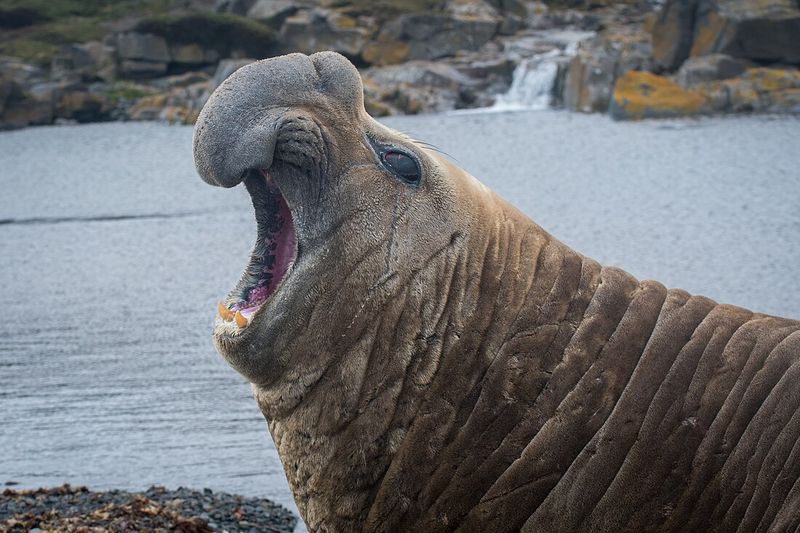
Southern Elephant Seals are the largest species of seal, with males weighing up to 8,800 pounds. They inhabit the cold waters of the Southern Hemisphere, particularly around Antarctica.
Known for their distinctive long noses and aggressive behavior during the breeding season, these seals are deep divers, hunting squid and fish at depths of up to 4,900 feet.
Elephant Seals spend months at sea, returning to land to breed and molt. Their large size and presence on the beaches make them a remarkable sight, and they play a crucial role in the marine ecosystem.
Asian Elephant

The Asian Elephant is slightly smaller than its African cousin, weighing up to 11,000 pounds. Found across South and Southeast Asia, they inhabit diverse environments, from grasslands to forests.
Known for their intelligence and close-knit social structures, Asian Elephants live in matriarchal herds. They are significant in cultural and religious contexts across Asia. With their trunks, they perform various tasks, from foraging to bathing.
Asian Elephants face threats from habitat loss and poaching, making conservation efforts vital. Their presence is crucial for maintaining biodiversity, as they help in seed dispersal and habitat modification.
Sperm Whale

The Sperm Whale is the largest toothed predator, distinguished by its massive head and deep-diving abilities. Weighing up to 90,000 pounds, these whales are found in oceans worldwide.
They dive to great depths, reaching up to 7,380 feet in search of squid. Sperm Whales have complex social structures, often seen in matrilineal groups. Their echolocation abilities are highly developed, aiding in navigation and hunting.
Despite their size, they are agile and can perform impressive breaches. Sperm Whales play a crucial role in the ocean ecosystem, influencing nutrient cycling through their feeding habits.
Gray Whale
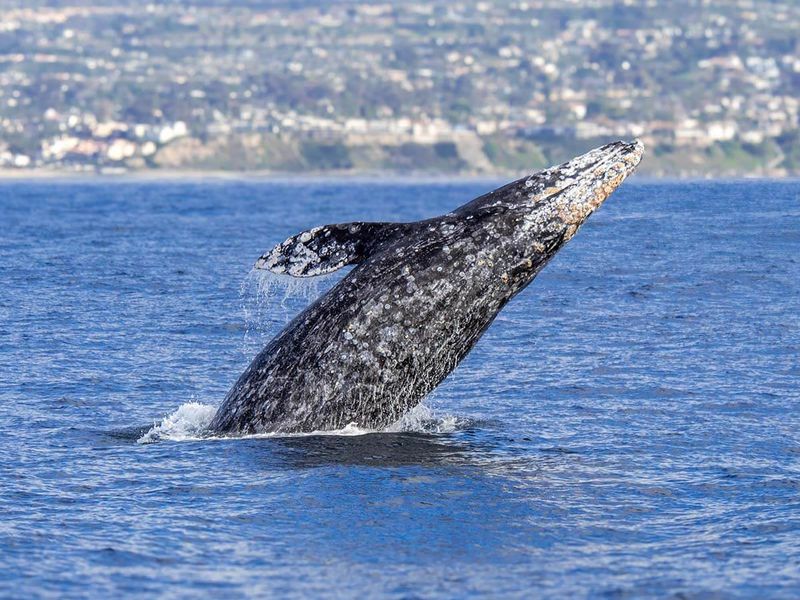
Gray Whales are medium-sized baleen whales, known for their long migrations along the Pacific coast. They weigh up to 90,000 pounds and are characterized by their mottled gray skin.
Gray Whales feed primarily on benthic crustaceans, diving to the ocean floor to forage. Their migratory patterns cover vast distances, from feeding grounds in the Arctic to breeding areas in Baja California.
Gray Whales are often seen breaching and are a popular attraction for whale watchers. They play a significant role in their marine ecosystems, affecting prey populations and contributing to nutrient cycling.
Manatee
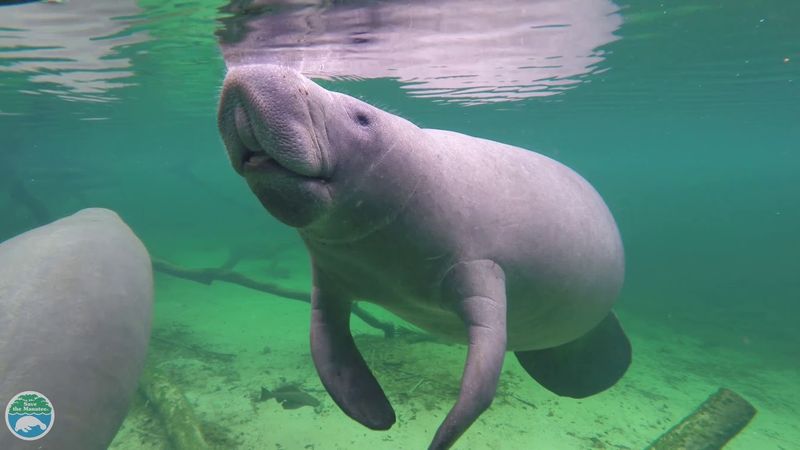
Manatees, also known as sea cows, are large marine mammals inhabiting warm coastal waters. Weighing up to 1,200 pounds, they are gentle herbivores, feeding on seagrasses and aquatic plants.
Manatees are slow-moving and often seen in shallow waters, making them vulnerable to boat strikes. They are solitary, except for mothers with calves, and have a slow reproductive rate.
Conservation efforts focus on protecting their habitats and mitigating human-induced threats. Manatees are iconic symbols of Florida’s wildlife and play a vital role in maintaining healthy coastal ecosystems through their grazing activities.
Moose

Moose are the largest members of the deer family, found in northern forests across North America and Eurasia. Males can weigh up to 1,500 pounds and are recognized by their large antlers and long faces.
Moose are primarily browsers, feeding on leaves, bark, and aquatic vegetation. They are solitary animals, except during the mating season when males compete for females.
Moose play an important role in their ecosystems, affecting vegetation dynamics through their feeding habits. They are also culturally significant and are often a symbol of the wild frontiers they inhabit.

